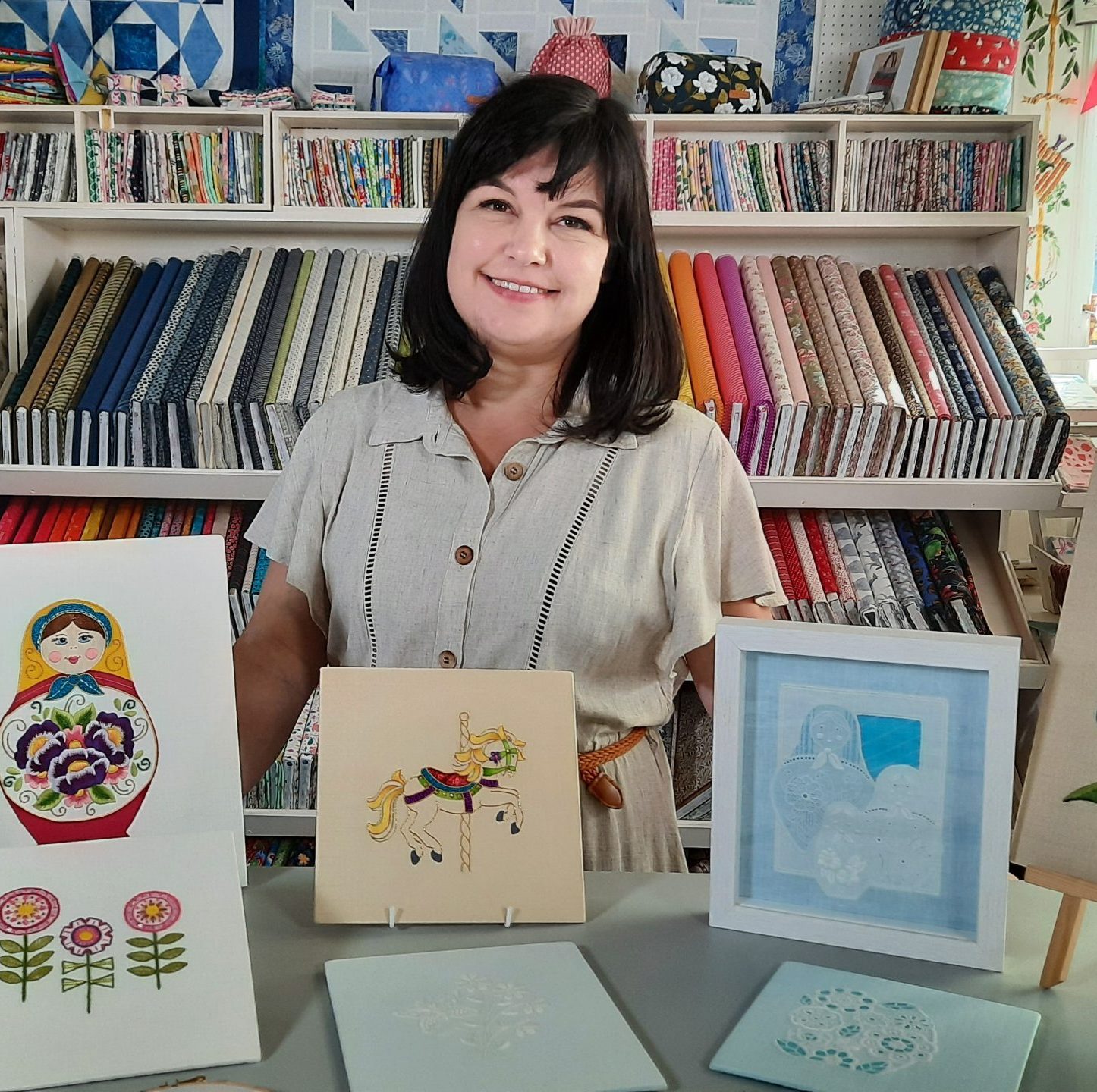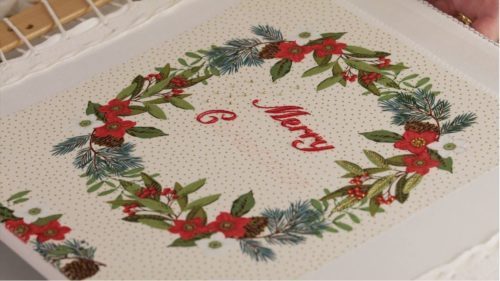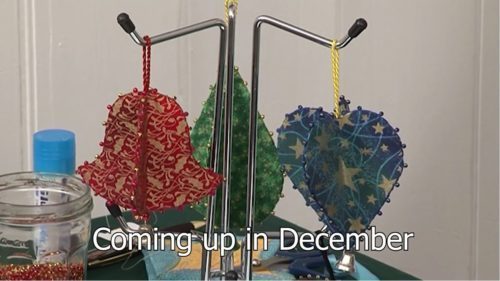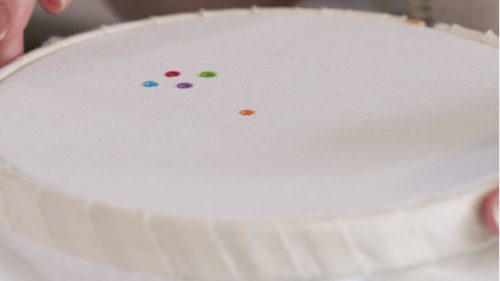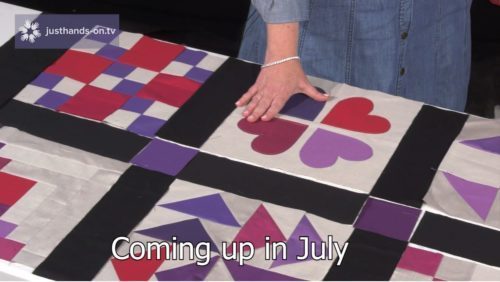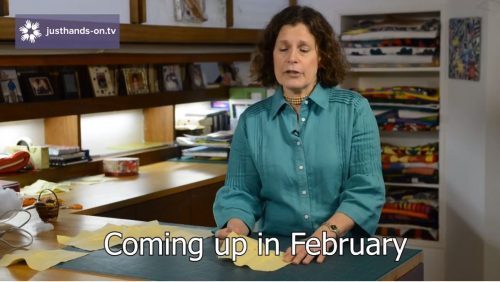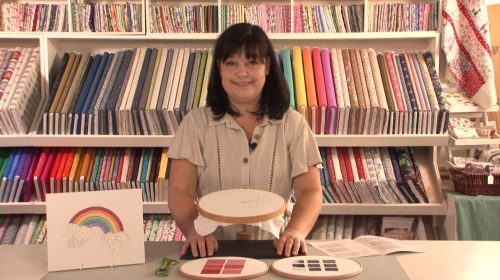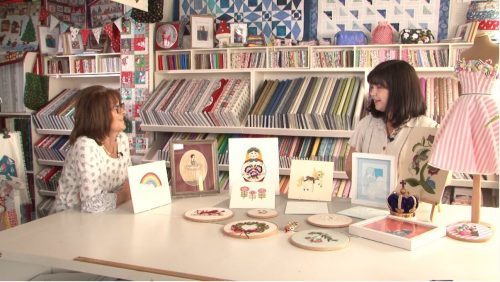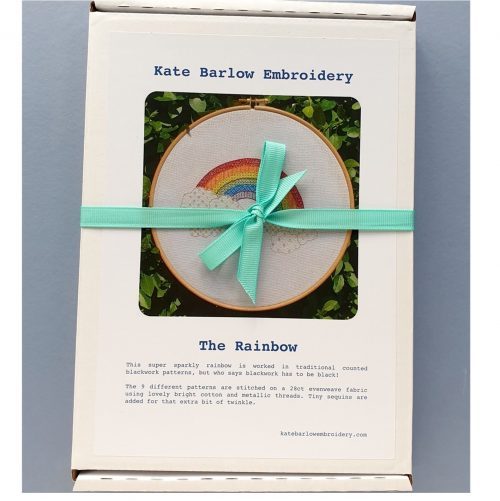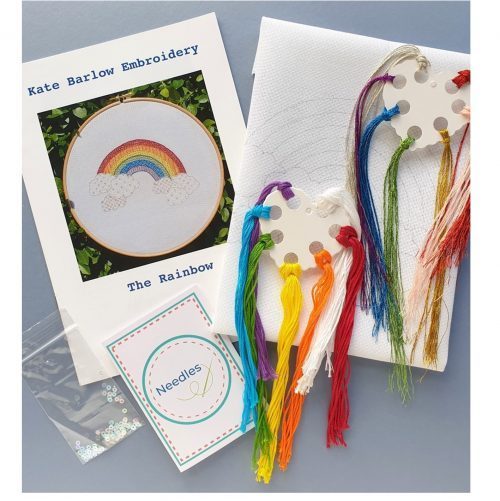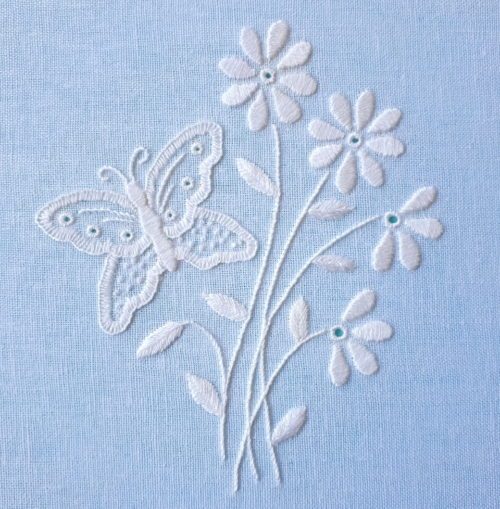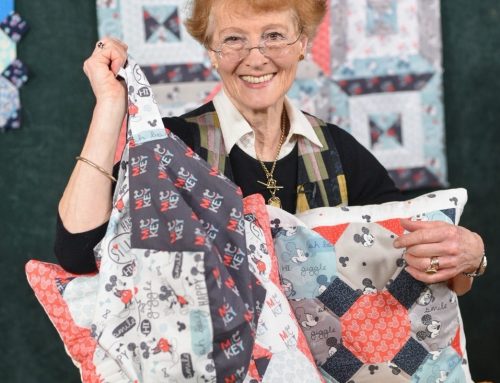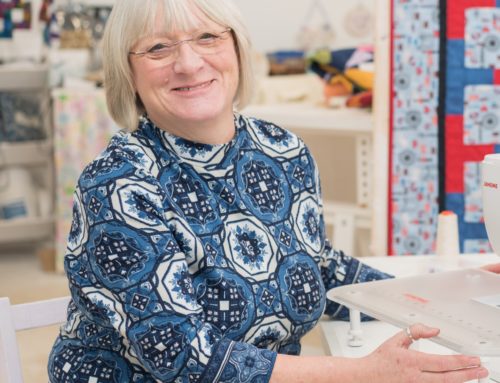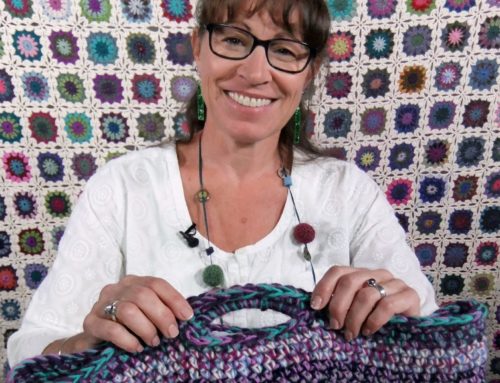About Kate
Kate grew up in North Wales and originally studied costume at the Royal Welsh College of Music and Drama in Cardiff before graduating in 2001 with a BA Hons in Theatre Design. Following this she worked as a freelance costume maker at Glyndebourne Festival Opera and then as part of the Touring Wardrobe department at the Welsh National Opera. Kate has always loved hand embroidery, and got the stitching bug from her Nan at an early age, so in 2013 she decided to take the plunge and re-train as an embroidery tutor at the Royal School of Needlework (RSN) at Hampton Court Palace.
Kate graduated from the Future Tutors Programme at the RSN with distinction in 2016. During the course she studied many traditional hand embroidery techniques including goldwork, Jacobean crewel work, blackwork, stumpwork and silk shading. In 2015 Kates Advanced Silk Shaded budgie “Smuggler” was accepted by the Royal Academy of Arts for their annual Summer Exhibition. The piece was also made into a greetings card.
Kate loves to design her own embroidery kits, using traditional techniques in a contemporary way. She also likes to combine her embroidery with her love of historical dress, creating kits based on original pieces. Her classes can cover all levels of ability, from absolute beginners to more advanced stitchers. When she’s not involved in freelance projects Kate works as a stitcher for the RSN in their commercial studio, working on conservation, restoration and private commissions.
Kate has taught for the Royal School of Needlework at Hampton Court Palace, RSN Bristol, Bath Fashion Museum, Williamsburg School of Needlework in the U.S., and the RSN 2018 Summer School in Lexington, Kentucky. She also teaches for The Craft Sanctuary, Needlework Tours and Cruises, The Alpine Experience, Crewelwork Company, and justhands-on.tv !
In 2018 Kate was runner up in The National Needlecraft Awards 2019 Embroidery Designer of the Year category.
Signature Technique
Silk Shading
Top Tips
- You invest a lot of time and love in your stitching so always buy the best quality materials and equipment you can afford. This will give you better results and will create pieces that will last and hopefully become heirlooms!
- To help stop your threads from becoming knotted and tangled, work with a fairly short length in the needle. About 30cm is a good length and it will also help to maintain the condition of the thread.
- Don’t be afraid to have a go! Even the best stitchers get very good at unpicking! One of the nice things about hand embroidery is that you can take things out if you’re not 100% happy.
- Use traditional techniques in a contemporary way to create beautiful textile art.
- Practise, practise, practise. I know it’s a bit of a cliche but every has to start somewhere are the more you stitch the better you get.
- Don’t underestimate the healing effects of hand sewing. Your projects don’t need to be complicated, even simple stitching can bring great pleasure and calm.
Videos
Posts
A great idea for recycling that old blazer (that’s not worn out!)
Taking inspiration from one of our videos Jo made this great cushion for her son on which she managed to use the pockets to embellish the front: and she also took the opportunity to use the labels from the blazer, which included not only Ben's name but also 'Made in England' - isn't that cute!!!! If you like this idea - have you seen our video: Easy Closure for a Cushion with Valerie Nesbitt
Is backstitching necessary for strip piecing?
Question from Youtube
Still a little new to quilting and enjoy it already! One thing I noticed is that you didn't back stitch when starting to join a new row. Is it necessary? Thanks, I know this is probably a simple question. Answer Nope the backwards and forwards and fixing stuff isn't necesary as you will be sewing across at rightangles at some future point (and at the time of sewing you don't know where you will be cutting). Make sure the stitch length isn't too long though - 2.2 or 2.4 is perfect for strip piecing (and piecing in general).
Recyling men’s ties
Question: Having watched the video: (click here to view) How many ties were used to make the quilt in the video, recycling men’s ties? I would like to make a quilt the same size as the one in the video. Would you recommend this project to a beginning quilter? Answer from Valerie
Sorry I can't recall how many ties I used BUT each tie contains a huge amount of fabric once its unravelled and if you cut into uneven strips then you can use it all (I still have a stash of large scraps for another quilt);
Its a great quilt for beginners BUT remember that the ties are on the bias of the grain so the strips will move until you anchor them onto their calico (or similar) backing - if you are a complete beginner spray starch may help you during the sewing process.
Its extremely forgiving especially since you can trim the blocks back to be exactly the same size as each other - whether you use the complete block of ties or couple it with a plain piece of fabric to make the half-square triangle unit - which in turn means you need to make only half the number of original blocks.

